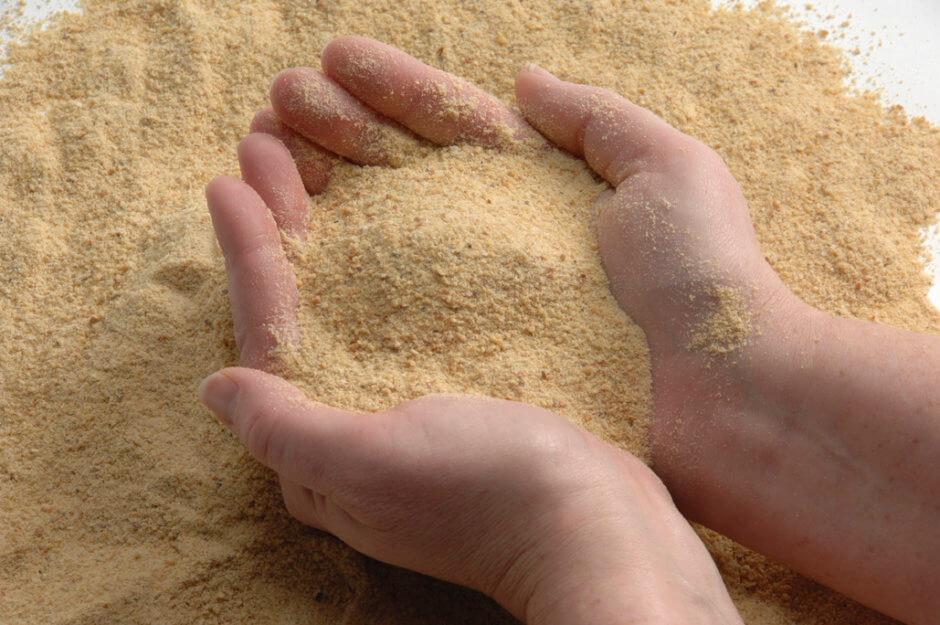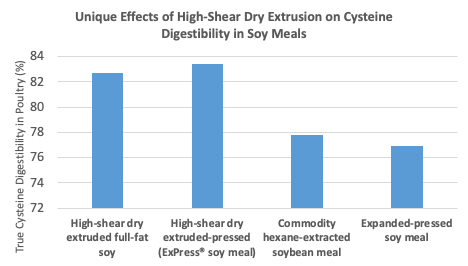Improved Cysteine Digestibility in Poultry with High-Shear Dry Extrusion of Soy

Amino acids that make up proteins are critically important in any diet. Typically, in order to build proteins, all amino acids are needed. Commercial diet formulations often focus on levels of lysine and methionine, as these tend to be limiting and can impede growth and efficiency.
However, when working on least-cost diet formulations, as I regularly do, other amino acids often come in to play as well.
There are two sulfur-containing amino acids that make up proteins – methionine and cysteine. The sulfur component is important because it helps proteins stick together and form 3-D structures, which give them function. While there are a myriad of functional proteins in soy, one such group is known as the antinutritional factors, which are similar to trypsin inhibitors. Antinutritional factors serve as a natural defense mechanism for soy, making protein digestion difficult and dissuading animals from eating it. Therefore, heat processing like high-shear dry extrusion, which deactivates trypsin inhibitors and other antinutritional factors, is needed to make high-quality soy meals that enhance animal growth.
It should be noted that one type of heat processing does a markedly better job of promoting digestion of sulfur-containing amino acids more than others. In the case of cysteine digestibility, high-shear dry extrusion is far superior to other methods (data from Dr. Carl Parsons, University of Illinois).

As seen in the graph above, high-shear dry extrusion does something unique to free up cysteine in soy proteins. Digestibility improvements of 5-6% percentage points for any amino acid indicate a major advantage. The heating processes for hexane-extraction, and those achieved with expanders, produce very different results. It is much more difficult to access cysteine during digestion with these processing methods.
Remember that cysteine is used in proteins to give 3-D structure and function and that one important group of soy proteins is the trypsin inhibitors. As seen here, one soy trypsin inhibitor contains seven cysteine pairs that make the protein stick together and function, causing difficulty during protein digestion. Vastly improved cysteine digestibility following proper processing with high-shear dry extrusion can also indicate better antinutrient deactivation, providing higher quality meal. Additionally, feathers are rich in these amino acids, resulting in chickens having a high requirement.
What does this mean for formulations? When using high-shear dry extruded soy meals in, for example, broiler formulations, anywhere from $30-62/ton meal premiums can be realized. Part of this advantage is due to improvements in amino acid digestibility, including cysteine. If you would like to learn more about the benefits of using high-shear dry extruded soy meals, please contact us, we would love to hear from you!



